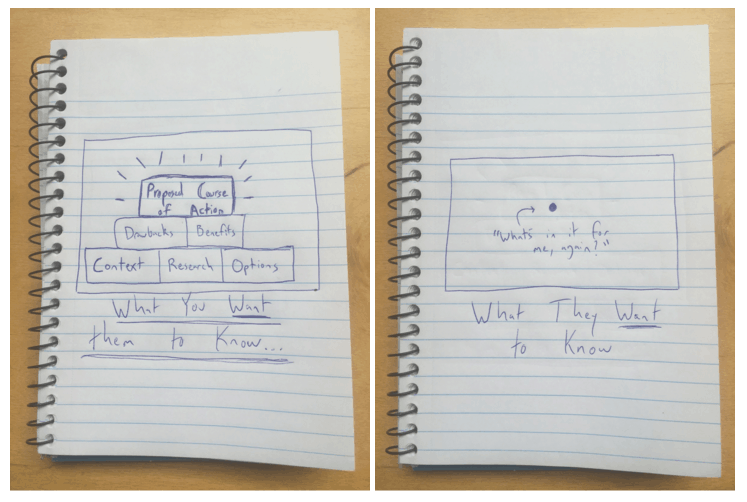
What exactly makes one a public policy expert?
- Maybe it’s your appreciation of the nuanced historical context of an issue?
- Your love of understanding the details (and the caveats) to a proposed plan of action?
- Or your ability to fluently speak in acronyms, buttressed by your extensive knowledge of relatively obscure demographic facts!
But here’s the rub: The exact same qualities that make you the expert might be holding you back in getting your message across to non-experts.
A few highly technical diagrams to set the scene:

Whether you’re trying to change the hearts and minds of candidates, legislators, government administrators or the general public, your main messaging strategy should remain the same:
Know Your Audience
- What do they care about?
- What are their pain points?
- What is their current level of interest/investment?
Set the Table with Why They Should Care
- For politicians, you might appeal to the number of constituents in their area affected by X. Or the projected magnitude of the problem in one year if it goes unsolved.
- For the public, you might start with appealing to a value they hold dear, such as fairness or keeping your family safe.
Banish Jargon
- While technically correct, the footnotes version of what you’re working on isn’t of much use if people aren’t getting past your white paper’s title.
- Pretend like you’re explaining the issue to your preternaturally smart 8 year old niece.
- Don’t make assumptions about what they know: that means no acronyms, references to other topical examples or five dollar words when a 10 cent word will do.
Find the Emotional Story
- Facts will not be as persuasive as emotions. We’re not doing away with the facts – but they should be used intentionally to support the emotional story at the heart of your issue.
Set Your Frame Intentionally
- If you haven’t read George Lakoff… do yourself a favor and start with Don’t Think of an Elephant. Lakoff explains how the narrative frames we choose set the stage for your audience to understand the issue and context exactly the way you want. An example we’ve all heard are the terms “pro-life” and “pro-choice” – each phrase is used to elicit a meaningful framework of thinking about abortion. Or reproductive rights. See what I did there?
It can be frustrating to feel like you’re oversimplifying your issue for a wider audience, but here are two consolations:
1) Your messaging doesn’t have to be the full lecture – it can be the invitation for people to start caring and paying attention to the wider story.
2) Even if you aren’t getting across your entire campaign message, you are communicating the most important parts of your message.
It’s not about sacrificing depth on your issue, it’s about knowing your audience and what will compel them to take further action, which is what your public policy campaign is about in the first place.


